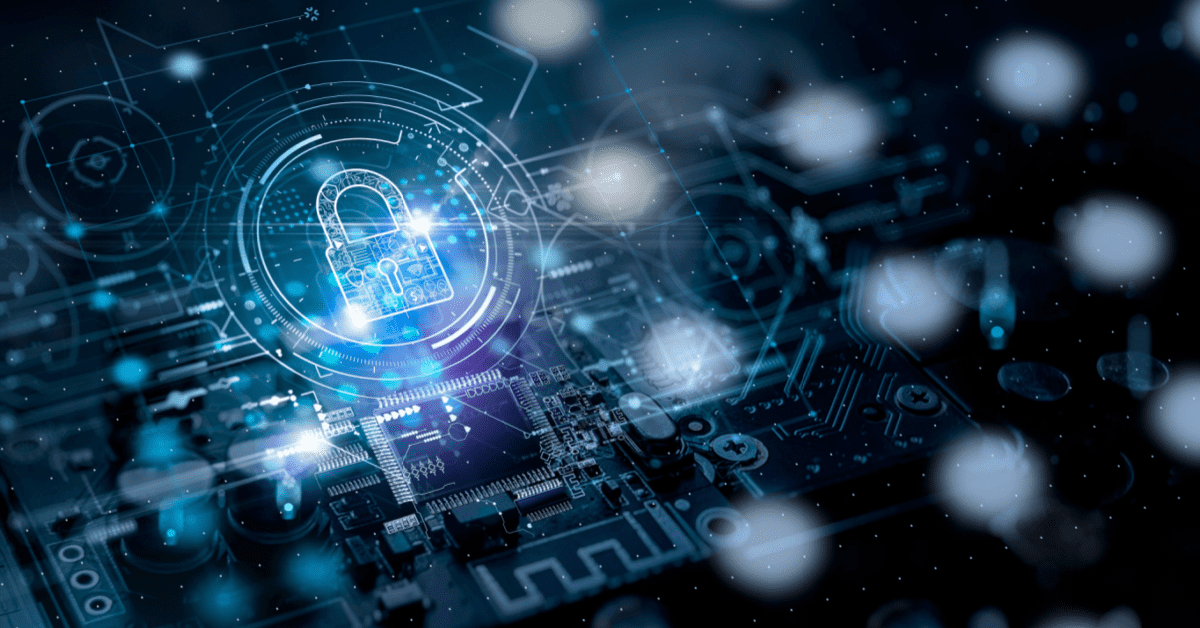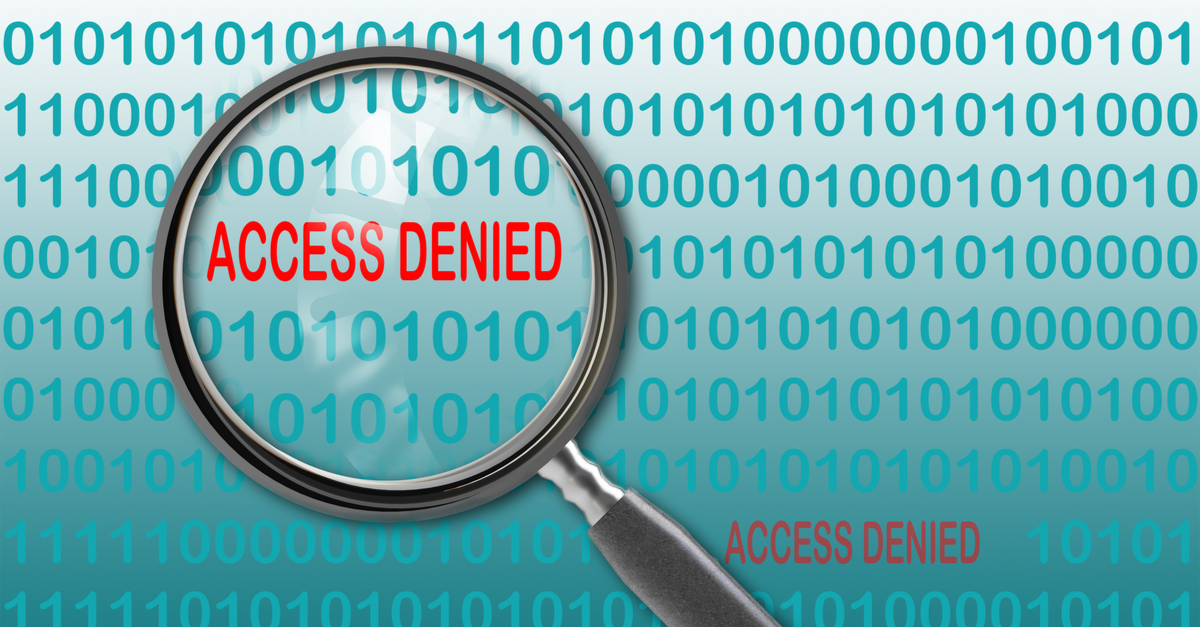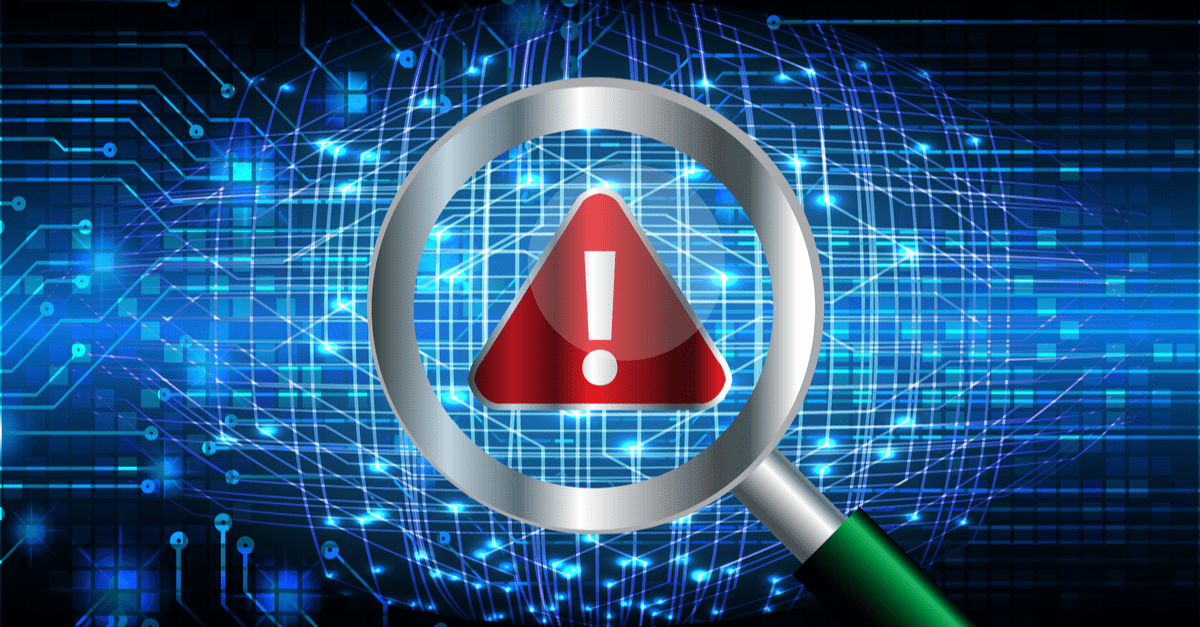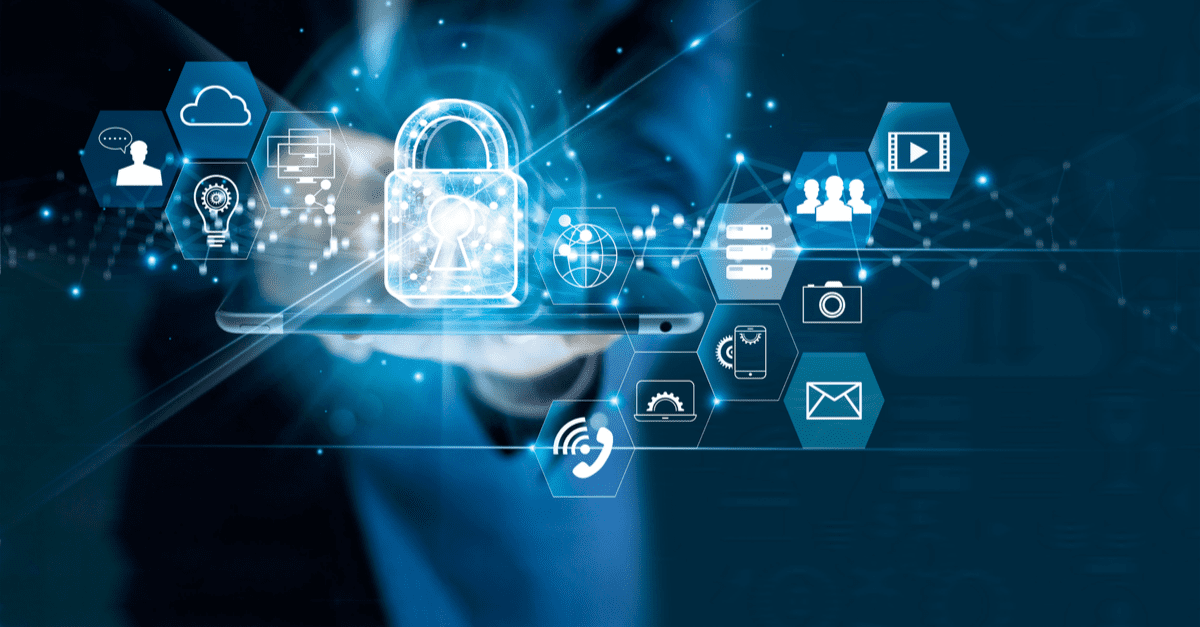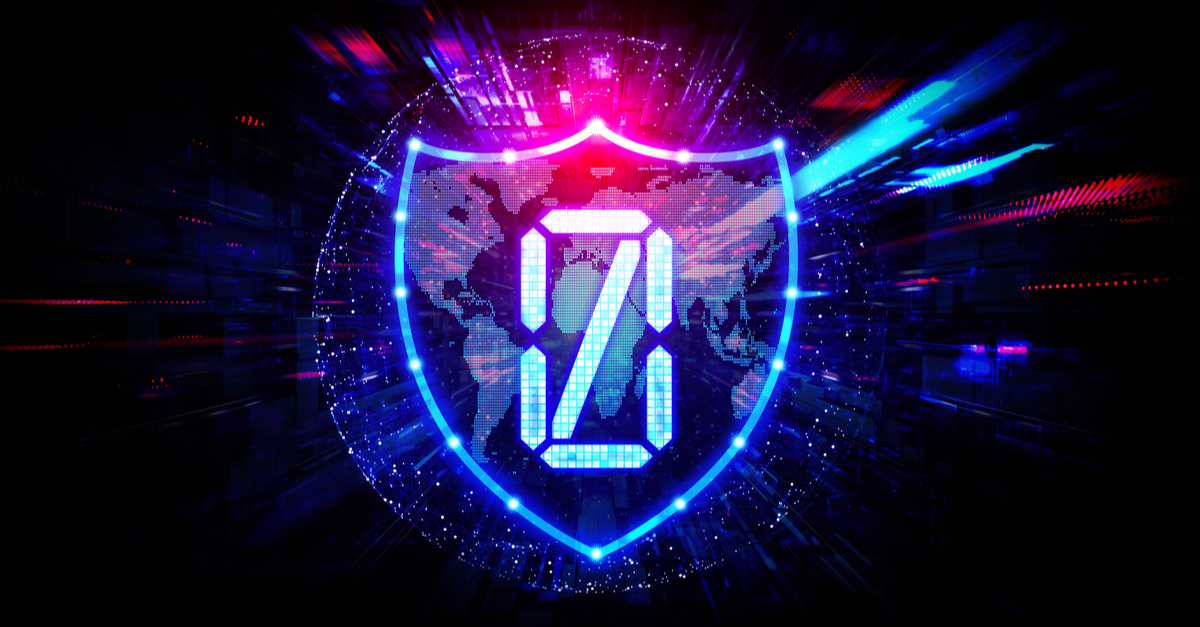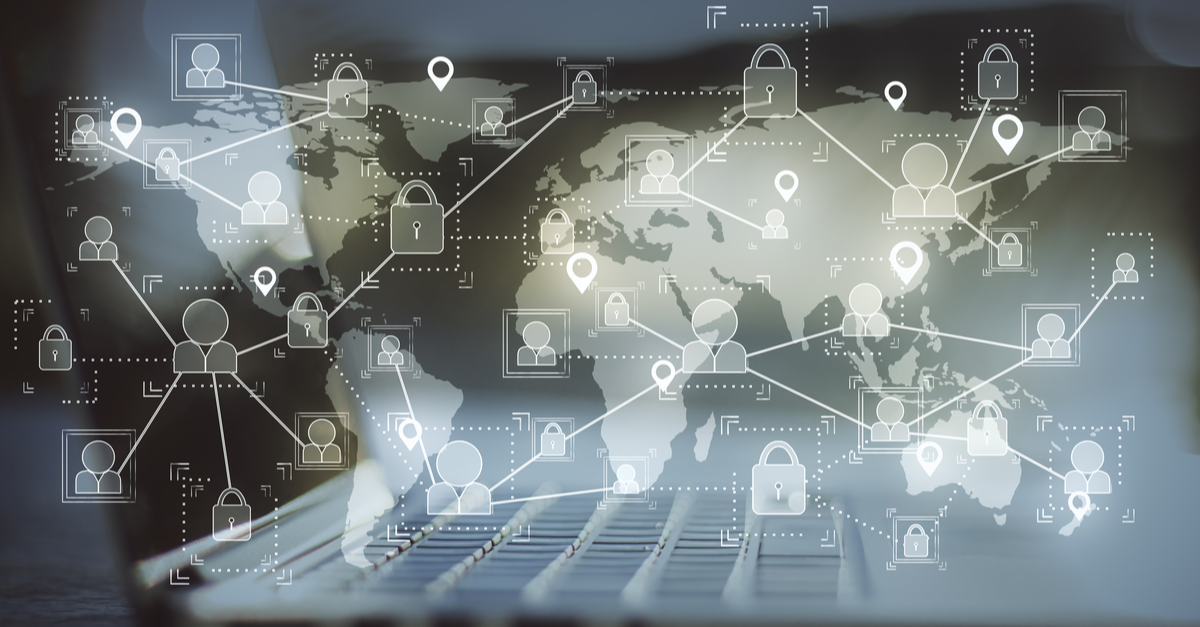[Customer Story] Collin County, Texas, Uses Appsian’s MFA Solution to Improve PeopleSoft Security
Collin County, like all counties in Texas, is considered an extension of state government. Located just north of Dallas, Collin County (the County) provides various government services to its more than 1,000,000 residents. The County’s security team is responsible for enabling secure yet convenient access to appropriate information and services to their on-premise installation of PeopleSoft. Unfortunately, as is often the case with legacy, on-premise PeopleSoft installations, convenient access can lead to security gaps.
What Challenges Made Collin County Search for A PeopleSoft MFA Solution?
The security team at Collin County was observing vulnerabilities in their network regarding potentially unknown people accessing bank account routing numbers. These security gaps made their network prone to phishing attacks by external hackers who could access their network through compromised employee credentials. The attackers also could change the bank account numbers on the direct deposit page so every time the payroll ran, they could deposit the employee paychecks into offshore accounts. Collin County wanted to improve their PeopleSoft data security posture and reached out to Appsian Security to equip them with an MFA solution that could seamlessly integrate into their existing applications without additional servers or customizations.
Collin County Plugged Their Security Gaps with an Adaptive MFA Solution
Following a strategic decision by their Chief Information Security Officer to strengthen data security and protect their network from phishing attacks, the IT leaders at Collin County set out to upgrade and modernize their HCM applications with advanced features to improve data security and block external threats. Using the Appsian Security Platform (ASP), they deployed multi-factor authentication along with logging & analytics to achieve the desired results.
Appsian’s adaptive MFA solution seamlessly integrated with Collin County’s HCM applications without causing additional friction for the users. The County deployed multi-factor authentication to challenge users to reconfirm identity at the page/component level and secured administrative access to PeopleSoft by requiring MFA from everywhere, including in-house. They also secured remote access for banking transactions and improved employees’ payroll data security by successfully detecting and blocking external threats. In addition to multi-factor authentication, Collin County was able to secure sensitive information and PII in nonproduction environments, such as dev, test, and train, by leveraging ASP’s data masking functionality.
End-to-End PeopleSoft Data Security and Compliance with the Appsian Security Platform
Appsian’s PeopleSoft customer base includes multiple state governments and local municipalities, like Collin County, looking for a single platform to strengthen Identity and Access Management, Data Security, and Compliance, including:
- Native SAML/ADFS Compatibility And PeopleSoft MFA Integration– Integrating single sign-on and multi-factor authentication natively with PeopleSoft and your identity provider improves security and convenience. Integrated MFA also enables step-up authentication, so users can be forced to re-authenticate when accessing highly sensitive transactions.
- Contextual Access Control For Greater Security – Reduce the attack surface with a dynamic rules engine that applies the contextual variables of a user’s access and defines privileges in real-time. Implement least privilege to limit access to modules/transactions, dynamically mask sensitive data, enforce step-up MFA, and more.
- Real-Time Analytics For Improved Response Times – Enhanced PeopleSoft logging capabilities capture all user activity at the field, page, and component levels and combines them with contextual user data. Real-time visualized dashboards allow you to quickly spot suspicious activity and drill down to root out issues.
Contact Appsian’s PeopleSoft experts today to learn how the Appsian Security Platform can help you establish an MFA solution and a strong ERP data security posture.
Put the Appsian Security Platform to the Test
Schedule Your Demonstration and see how the Appsian Security Platform can be tailored to your organization’s unique objectives
Protecting ERP Data from Application Vulnerabilities Using A Multi-Layered Security Approach
You spend countless hours, not to mention considerable money, to secure your SAP and Oracle ERP data. One day, you discover that cybercriminals have exposed a vulnerability using an application misconfiguration. This has become increasingly common as criminals seek methods to covertly infiltrate applications to gain access to thousands of employee records.
This situation happened to Microsoft in December 2019 and didn’t generate the kind of headlines usually associated with data breaches. This was simply a human error. But these kinds of human errors and misconfigurations are one way that hackers can gain a foothold into your SAP or PeopleSoft ERP system. Now the question is, how are you going to protect your data after an attacker side-stepped your perimeter defenses?
Misconfiguration is the Fastest Growing Security Risk
According to the 2020 Verizon Data Breach Investigations Report, misconfiguration errors (failing to implement all security controls) are up 4.9% from last year’s report and are the fastest-growing risk to web applications. It’s easy to apply this kind of risk to legacy ERP systems because SAP and PeopleSoft environments often consist of millions of lines of custom code and custom-built components communicating with each other and to external systems through various APIs and interfaces bolted together over time.
On top of that, you’re dealing with an abundance of changes to roles, configurations, access controls, and compliance protocols to accommodate new business processes and evolving data privacy policies. If companies are not analyzing and monitoring the underlying security implications of all these changes and movement, they’re bound to face a similar situation as Microsoft with a backdoor left unlocked for any hacker to stroll through.
Finally, don’t forget that many organizations simply do not stay current with system updates and security patches. According to the Data Breach Investigations Report, only half of the vulnerabilities are patched within three months after discovery, leaving companies exposed to attacks against known exploits.
The Multi-Layered ERP Data Security Approach
The growing complexity of SAP and PeopleSoft environments make securing ERP data an enormous challenge. To prevent inadvertent exposures from misconfiguration, Greg Wendt, executive director of Appsian, suggests that companies “must adopt a multi-layered security approach with dynamic security tools that can monitor user access in real-time, providing transparency over what data is accessed and by whom.”
This multi-layered approach includes masking sensitive data, verifying identity via multi-factor authentication (MFA), and enhanced logging and analytics. Appsian adds layers of security WITHIN your ERP system to help ensure your data is still protected when a hacker strolls past your perimeter defenses, thanks to a misconfiguration.
Dynamic Data Masking provides contextual masking policies that adapt to the context of access. That means when a hacker attempts to access sensitive data fields but doesn’t match key attributes such as user ID, privilege, device, location, or IP address, they will encounter full, partial, click-to-view masking or complete redaction of the data field.
Adaptive MFA ensures that contextual attributes (ex. device, network, location) are the determining factor for deploying MFA challenges. For example, customers can require an MFA challenge when a user account is accessing the system from a remote IP address or after business hours.
Enhanced Logging and Analytics with Appsian360 allow you to monitor your networks for suspicious activity and provide detailed insights regarding how, when, and by whom transactions and data fields are being accessed. This visibility is particularly important for identifying users with high-privilege access who are accessing pages they shouldn’t be. The enhanced logging can trace all the pages a user accessed during a session, helping to identify a potential intrusion. This kind of real-time data access and usage visibility was previously unavailable to SAP and Oracle ERP customers.
Eyes and Ears on the Entire ERP Data Ecosystem at All Times
“The enterprise must learn to have eyes and ears on their entire data ecosystem at all times,” said Wendt. Microsoft’s recent data breach due to misconfiguration highlights the importance of a security strategy that continuously looks for misconfigurations and compliance violations. Next, they should establish a multi-layered security approach to prevent unauthorized data access, along with enabling organizations with the ability to identify access trends that may be indicative of incorrect access controls.
Misconfigurations are, unfortunately, a common error and should be treated with the same sense of urgency and level of effort by security professionals as their network perimeter. After all, not all attacks are external.
Contact us today to learn how the Appsian Security Platform and Appsian360 can help you establish a multi-layered security solution.
Put the Appsian Security Platform to the Test
Schedule Your Demonstration and see how the Appsian Security Platform can be tailored to your organization’s unique objectives
Access Governance is Critical for Preventing Phishing Attacks
The news is flooded with stories about cybercriminals successfully engaging in phishing and social engineering aimed at exploiting people’s COVID-19 fears, all in order to steal user credentials to business applications and VPNs. From fake delivery notifications to World Health Organization (WHO) impersonations, malicious actors are preying on people’s emotions during this pandemic.
The credentials used for authentication are ultimately an organization’s network perimeter. This puts organizations in a difficult position — they can limit employee’s access to these systems and risk negative impacts on productivity and business continuity, or they could bury their head in the sand and hope nothing bad happens. Many are choosing the latter, and the implications are being felt worldwide.
Why There is a Correlation Between a Stressful Environment and Cyber Attack Volume
Social engineering fundamentally relies on taking advantage of strong emotions to trick people into taking actions that can cause them harm. This crisis has emotions running high, and many employees are stuck in a state of fight or flight.
Research shows that stress impairs the brain’s ability to make decisions. That’s why, when people are under stress, they often take more risks and engage in activities that could cause them harm. In other words, employees are not forgetting their phishing trainings, their brains are functionally incapable of making good decisions.
Cybercriminals rely on emotional responses — whether it’s clicking on links, downloading documents, or opening attachments — emotionally charged content (e.g., fake layoff announcement email with a malware attachment) is more likely to result in a successful attack
The problem isn’t the people, it’s the cybercriminals and the tactics they use.
How to Prevent Phishing Attacks?
The Principle of Least Privilege
Often, companies view data protection solely from the compliance and financial risk perspective. Unfortunately, this doesn’t go nearly far enough. It is recommended that companies consider limiting user access to resources based on the principle of least privilege, or the absolute minimum access necessary to complete a job function. Least privilege is a governance strategy that has never been more relevant than today — especially as organizations rely on remote workforces. Fundamentally, when users have more access than necessary, they may accidentally (or intentionally) violate compliance requirements designed to protect the organization.
Today, access governance is largely dictated by predetermined roles and permissions usually classified into groups (administrator, power user, etc.) This classification of permissions is tied to authentication processes like username/password security models that are heavily targeted by cybercriminals through phishing and social engineering. Further, if a phishing attack compromises a user’s credentials, then the cybercriminal may access or acquire as much sensitive data as their victim’s role will allow. This is precisely were least privilege should kick in.
The rise of phishing attacks that target coronavirus fears not only places organizational data at risk, but it also places employees at risk — especially those with high privileges. Many employees use the same credentials for multiple applications, such as social media networks and shared cloud drives. If one set of credentials is compromised, multiple systems are now at risk.
Limiting access to data according to the principle of least privilege provides organizations with the tools necessary to prevent catastrophic data breaches. A good question to ask yourself is, what data should my administrators and power users have access to? Do they need easy access to executive payroll data? Do they need easy access to other employee social security numbers? What do they really need easy access to in order to do their job?
The truth is, they will likely need access to some sensitive data, so how do you protect data that still falls under the principal of least privilege?
Zero Trust
“Zero trust” often sounds harsh — trust no one, assume a threat at all access points, and never grant access by default (e.g., a predetermined role and privilege.) At first glance, this mentality appears to go against corporate values like collaboration and integrity, but, in reality, it fosters them.
Moving toward an IT culture based on zero trust means that an organization can identify all devices, users, applications, and data across its ecosystem. Then, the organization can establish the appropriate controls that limit access where appropriate.
Fundamentally, a zero trust model encourages collaboration and integrity while also supporting employees who mean well but could be making risky decisions while under stress — coronavirus related or otherwise. By setting zero trust identity and access controls, organizations ensure constant alignment between who an employee is and what they have access to, thus, mitigating risk.
Multi-Factor Authentication
Part of establishing an effective zero trust model involves finding solutions that allow organizations to apply contextual attributes when granting access. Attribute-based controls adapt to different contexts and ultimately drive how and when users can access information. For example, an attribute might be geolocation or time of day. Adaptive multi-factor authentication (MFA) takes these attributes and requires additional authentication as users move across systems or within applications. For example, to log into an ERP system, passing a standard authentication challenge is required. Then, to update direct deposit or access payroll information, an adaptive MFA challenge should be deployed. Zero trust means that just because they passed through the front door of the application, they can’t execute the most sensitive transactions.
As employees work remotely, organizations may want to incorporate adaptive MFA so employees in finance or human resources can securely authenticate to their ERP systems. Adaptive MFA will detect anomalous locations or times for activity, trigger an additional authentication process, and prevent malicious actor access.
Ultimately, zero trust and adaptive MFA protect the organization, the person whose information was almost leaked, and the employee whose credentials were stolen. The organization can be alerted to the cyber criminal’s attempt to gain entry to its networks, the person whose data was almost leaked retains privacy, and the employee whose credentials were phished is protected from the negative impact of their privilege being hijacked.
Remote Access Means Phishing and Phishing Requires Additional Strategies
Organizations have tried to protect themselves from phishing attacks for years. What they have not done is protect themselves during a time of social, emotional, and physical upheaval. But, the current upward trend in phishing attacks should come as no surprise to organizations. Cybercriminals never rest — they take advantage of any weaknesses in an IT ecosystem, both digital and human.
Maintaining strong identity and access governance strategies ensures that both data and end-users can be protected during these strange and unusual times.
This article was originally published by Mission Critical Magazine.
Put the Appsian Security Platform to the Test
Schedule Your Demonstration and see how the Appsian Security Platform can be tailored to your organization’s unique objectives
Oracle Extends PeopleSoft Support to 2031. Now’s the Time to Invest in PeopleSoft Data Security Projects
On April 19, 2020, Oracle announced on its PeopleSoft Support blog that the company is extending support for the ERP application through 2031. As stated on the blog, Oracle remains “committed to a rolling ten years of support for PeopleSoft. We will review and plan to extend support again next year, and the year after that, so that you have a decade of committed support and can plan your enterprise software investments accordingly.”
This news should give PeopleSoft customers a sense of certainty that investing in the long-term success of their PeopleSoft applications is mission-critical. Thanks to COVID-19, organizations may be concerned about their short-term financial stability. Add in the newfound uncertainly of continuing large-scale IT projects in this climate (like a cloud ERP migration) – organizations have now found themselves looking for ways to reap maximum benefits with the lowest degree of overhead and project completion time.
Three “Home Improvement” PeopleSoft Data Security Projects
With large-scale projects on hold, it’s a good time to invest in smaller-scale projects that focus on what is truly mission-critical today (and for the near future) – PeopleSoft data security. You’re already working hard to secure data while users are accessing remotely and while bandaids may be in place right now, organizations must consider strategies that scale long-term.
Here are three smaller “home improvement” projects that strengthen your PeopleSoft data security posture:
Integrate your SAML Identity Provider (IdP) for Single Sign-On (SSO)
When you count the hours spent managing passwords (80% of help desk calls) or tackling SSO projects using customizations and home-grown solutions, you find that removing the complexity of PeopleSoft password management is an ROI positive project. Add in the lost productivity of users not being able to access business transactions (because they’re waiting for their password to be reset), then the ROI increases. The bottom line, a SAML-configured Single Sign-On for PeopleSoft will make everybody happy. A SAML SSO provides the combination of security and productivity that organizations are striving for. And, given the alarming uptick in phishing attacks – user credentials have become an obvious liability.
Strengthen IAM with Adaptive Multi-Factor Authentication (MFA)
When you’re buying new appliances for a remodeling project, you buy a washer and dryer in pairs. Yes, you can wash and dry your clothes using one or the other, but using both is a better option. Same with applying an adaptive multi-factor authentication (MFA) with your SSO as an effective method for verifying identity. Adaptive MFA ensures that contextual attributes (ex. device, network, location) are the determining factor for deploying MFA challenges. The context of access varies in mobile and work-from-home environments, and your level of control should do the same. This is essential if your users are accessing remotely, as managing authentication (especially for high privilege users) can be challenging.
It is also recommended to expand the use of MFA and apply step-up challenges on transactions that may be considered ‘highly sensitive.’
Real-Time Visibility for User Activity Monitoring and Transaction Logging
Just like a rug can tie a room together, real-time visibility via user activity monitoring and transaction logging can be the perfect complement to your PeopleSoft data security fixer upper. There are a lot of sensitive transactions being executed outside of the office these days, and monitoring user activity gives you a better sense of how your data is being accessed and used.
Invest in Today and Plan for Tomorrow
Now is a good time to take Oracle’s lead in their extension of PeopleSoft support – and alleviate a lot of the complexity around PeopleSoft data security, identity, and access management. Securing remote access with SSO and adaptive MFA today provides significant PeopleSoft ROI – along with applying a strong data security framework that can scale with a myriad of workforce and landscape changes.
Best yet, you can complete these projects in only two to four weeks, and we guarantee you won’t be cleaning up any sawdust when you’re done.
Request a demonstration of the Appsian Security Platform today.
Put the Appsian Security Platform to the Test
Schedule Your Demonstration and see how the Appsian Security Platform can be tailored to your organization’s unique objectives
Why VPN is Not Enough – and why Investing in ERP Data Security is Critical
With remote workplaces being put to the test, organizations are looking to quickly scale their security practices. Unfortunately, many are learning the hard way. They find themselves at the intersection of using conventional security technology like a virtual private network (VPN) to secure data residing in traditional, on-premise ERP applications like PeopleSoft and SAP ECC. This can be a toxic combination that may leave you feeling secure, but it should be noted that your data remains at risk.
A VPN is Not Data Security
Plain and simple – a VPN is a connection point. While it may shrink your threat surface, there are still many risk factors to consider. For instance: where is a user coming from? What data are they trying to access? What device are they using? Is that device actually being used by the right person? What PeopleSoft data are they trying to extract onto their personal device? And so on, and so one…
Once a VPN authenticates a user, a myriad of risk factors remain. This is where a VPN ends and data security should begin. However, most organizations are simply not prepared to mitigate the risks that come once a user has passed a VPN. Here are a few examples:
Federating High Privilege Users
High privilege users should face the most scrutiny. Ideally, a high privilege user should authenticate through Active Directory or whatever identity provider an organization is using. They should then receive federated privileges to PeopleSoft based on the contextual attributes of their access (ex. are they accessing from a foreign country?) Federating high privilege access is a fundamental way to ensure a user is provided with the appropriate level of privilege. However, a VPN cannot do this. In fact, authenticating to PeopleSoft using a SAML identity provider (like Active Directory) can be challenging unto itself (see this blog for more info.)
If the point of a VPN is securing remote access, then why not consider the contextual attributes that come with said access? After all, the remoteness is what is considered the risk. In this scenario, a VPN is merely acting as a thin authentication layer, on top of PeopleSoft’s typical username and password model. What if a user opts to make their VPN password the same as their PeopleSoft password? This is what hackers anticipate and sadly, they are usually correct.
Malicious Insiders Tend to be High Privilege Users
This is a touchy subject but should be acknowledged. While no one wants to assume the worst in their employees, the fact remains that the more access you have, the more damage you can do. Given the right motivation – bad things can happen. This is the most compelling case for data security because the highest stakes surround high privilege users. A/P, A/R, Finance, Supply Chain, Payroll – all these functions deal with money. Having the ability to lock down and limit access to data and transactions will have a tremendous impact on an organization’s ability to mitigate financial losses from fraud, theft, and espionage. And because of COVID-19, all of these functions are now being executed remotely. The potential for damage is exponentially greater than before.
Ask yourself – should payroll queries be run and exported onto a personal device? Should wires be sent outside of normal business hours? Should a vendor be created when access is coming from a foreign country? I believe the answer you’re looking for is… NOOOOOOO!!!
Integrating dynamic, risk aware controls on sensitive financial transactions (and data fields) mitigates much of this risk. In addition, transaction logging and analytics prove to be extremely beneficial, as many organizations would prefer not to hamstring their employees with restrictions. However, they would prefer to gain better visibility in case an anomaly is detected.
A VPN Can Be Costly, Unscalable, and Leave You in The Lurch
Like any addition to your architecture, downtime can occur. VPN vendors can experience enterprise-wide outages – causing major disruption. In addition, with organizations moving toward a 100% remote access, VPNs can be prone to kicking people off after a period of time. Adjusting to remote work environments is frustrating enough, but if access is limited or hindered, and you don’t have the benefit of a readily available help desk – your users will become agitated. With so many senior leaders focused on business continuity, having additional hoops for your employees to jump through is counter to productivity.
And then there is the cost factor – which will certainly balloon with the increased number of users. We understand that costs will vary, but the ROI of 100% of your employees requiring a VPN to log into PeopleSoft is not positive. And as we established above, if the point of a VPN is increasing data security/maintaining integrity of financial transactions – then the ROI is even further from positive.
How Appsian Provides ERP Data Security for PeopleSoft and SAP Applications
Appsian believes user authentication is important, but it’s only one part of an ERP data security posture. This is why we developed the Appsian Security Platform for PeopleSoft. Enhancing an organizations ability to authenticate users is most effective when its: integrated with your existing identity management strategy and risk aware. This is where Appsian provides far greater value than a VPN. We enable seamless, secure access to PeopleSoft (specifically) via Single Sign-On (integrated with a SAML IdP), along with adaptive Multi-Factor Authentication. These solutions combine to provide a much better user experience and a vastly superior value if protecting PeopleSoft from bad actors is the primary intention of your VPN.
Lastly, visibility is key. With sensitive transactions being executed outside of the office having a better sense of how your data is being accessed and used is critically important. Using transaction logging and real-time analytics, Appsian provides PeopleSoft customers with unparalleled levels of visibility. Thus, allowing you to keep a watchful eye on your data at all times.
Summary
When approaching how you can enable secure, remote access – its best to identify what are the key objectives and invest in the technology that best suits those needs. Are you concerned that the data inside your ERP applications could be breached or exfiltrated? Are you concerned that financial transactions could be corrupted? If the answer is yes, then data security – and not solely a VPN are the answer.
At the end of the day, COVID-19 has forced organizations into unprecedented challenges. With an unstable market and unpredictable year(s) ahead, it’s important to focus security efforts on internal data and processes – as these being corrupted will result in losses that can make recovery significantly harder.
To learn more about how the Appisan Security Platform can protect your ERP data, please Schedule Your Demonstration
Put the Appsian Security Platform to the Test
Schedule Your Demonstration and see how the Appsian Security Platform can be tailored to your organization’s unique objectives
